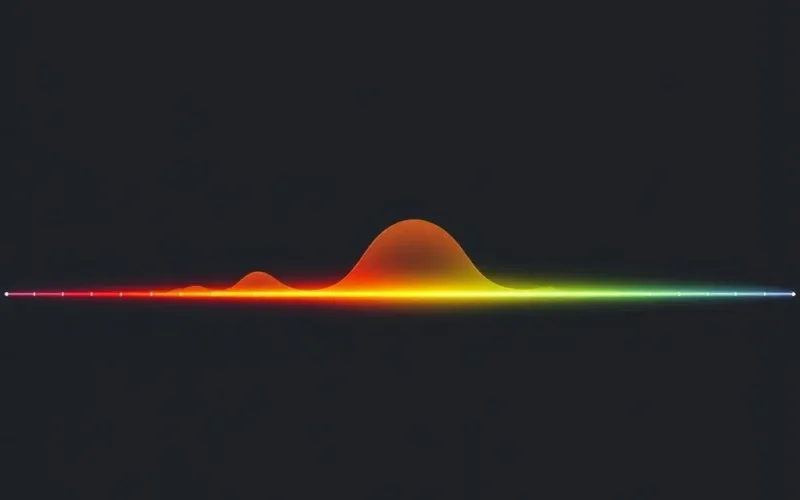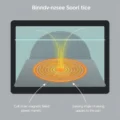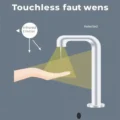Ever wondered how thermal cameras perform their magic, revealing a world invisible to our naked eyes? It’s a genuinely fascinating piece of technology that lets us “see” something we can only usually feel: heat.
Unlike your eyes or a standard digital camera that capture visible light reflecting off objects, thermal cameras operate on a fundamentally different principle. They aren’t looking for light waves at all. Instead, they are finely tuned instruments that detect and measure infrared radiation.
Think of infrared radiation as heat energy constantly being emitted by everything around us. Yes, everything – people, animals, buildings, even seemingly cold objects – emits some level of this energy. It’s just a different part of the vast energy spectrum that exists.
Hotter objects? They blast out more of this invisible, thermal energy than colder ones. The clever part? The camera captures this radiation and then translates its intensity into a visual representation – typically a vibrant palette of colors or shades you see on the screen. It’s less about seeing light, and more about literally seeing the temperature signature!
Table of Contents
See It Explained Simply: The YouTube Shorts
Want a quick visual breakdown of this cool concept? Check out our quick explainer video:
Pretty neat how they capture the unseen warmth, right?
Understanding the Unseen: Infrared Radiation
To truly grasp how a thermal camera works, we need to talk about the electromagnetic spectrum. This is the entire range of light and other electromagnetic waves, from radio waves at one end to gamma rays at the other.

Visible light – what our eyes see – occupies only a tiny slice of this spectrum. On the other side of visible red light lies infrared (IR) radiation. Infrared waves are longer than visible light waves and are primarily associated with heat.
Any object with a temperature above absolute zero (-273.15 °C or 0 Kelvin) emits thermal radiation. This emission is a form of electromagnetic radiation, and for objects at typical everyday temperatures (like people, buildings, or warm machinery), a significant portion of this emitted radiation falls within the infrared range. This phenomenon is described by physical laws like Planck’s law and the Stefan-Boltzmann law, which relate an object’s temperature to the spectrum and total intensity of the radiation it emits. Hotter objects emit more radiation overall, and the peak wavelength of their emission shifts to shorter wavelengths (towards visible light), but they still emit strongly in the infrared.
How the Camera Detects and Measures Heat Signals
So, if infrared radiation is invisible, how does a camera detect it? This is where the specialized sensor, often called a microbolometer, comes into play. Think of the sensor as a grid of tiny pixels, much like a regular camera sensor, but designed to be sensitive to IR energy instead of visible light.

Each tiny element in the microbolometer array contains a material whose electrical resistance changes ever so slightly when exposed to infrared radiation. When IR radiation from an object hits a specific pixel, it warms up the material, causing a measurable change in its resistance or voltage depending on the sensor type. This change is directly proportional to the intensity of the infrared radiation hitting that pixel.
The camera’s electronics rapidly scan this array, measuring the electrical change at each pixel. This creates a detailed map of the infrared radiation intensity across the scene the camera is pointed at.
Translating Intensity into a Visible Image
Now, the camera has raw data – a grid of numbers representing IR intensity across the scene. But how does this become the colorful thermal image you see?
The camera’s internal processor takes this intensity data and maps it to a visible scale, usually colors or shades of gray. Higher IR intensity (meaning hotter objects) is typically assigned brighter or warmer colors (like red, orange, or yellow), while lower intensity (colder objects) is assigned darker or cooler colors (like blue, purple, or black).
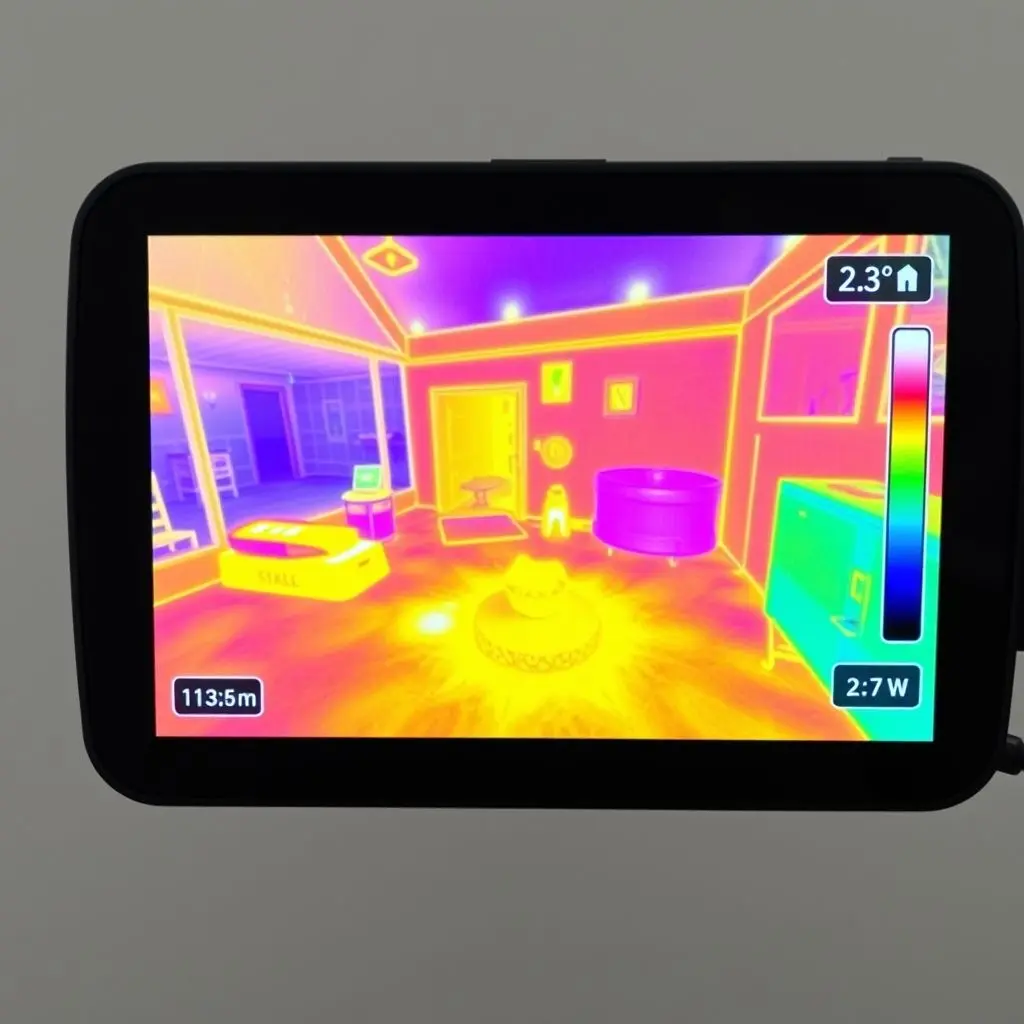
Different color palettes exist – ‘Ironbow’, ‘Rainbow’, ‘Gray’, ‘Hot White’, ‘Hot Black’ are common examples. Each palette visually represents the temperature gradients differently. The camera’s software uses algorithms to correlate the detected IR intensity levels to temperature readings, often displaying a temperature scale alongside the image so you can interpret what the colors represent in degrees.
The Critical Factor of Emissivity
Here’s a crucial point often overlooked: thermal cameras don’t directly measure an object’s temperature. They measure the infrared radiation emitted by the object. And how well an object emits thermal radiation is described by a property called emissivity.
Emissivity is a value between 0 and 1. A perfectly emissive object (a theoretical “blackbody”) has an emissivity of 1, meaning it emits the maximum possible thermal radiation for its temperature. Real-world objects have emissivities less than 1. Materials like matte paint, human skin, or asphalt have high emissivities (close to 0.9-0.95). Shiny, polished metals have very low emissivities (often below 0.1).
Why is this important? A thermal camera reading is affected by both the object’s true temperature *and* its emissivity. A hot, polished metal object might appear cooler in a thermal image than a cooler object with a much higher emissivity, simply because it emits less IR radiation. Most professional thermal cameras allow you to adjust the emissivity setting based on the material being inspected for more accurate temperature readings.
Seeing Beyond the Obvious
Because thermal cameras visualize heat, they are incredibly useful tools for diagnosing problems that involve temperature differences. This includes:
- Building Inspections: Finding insulation gaps, moisture issues, or air leaks.
- Electrical Maintenance: Identifying overheating components before they fail.
- Mechanical Systems: Detecting friction or wear in machinery.
- Medical Applications: Identifying fever or inflammation patterns (though specific medical devices are needed).
- Security and Surveillance: Detecting people or animals in darkness or smoke.
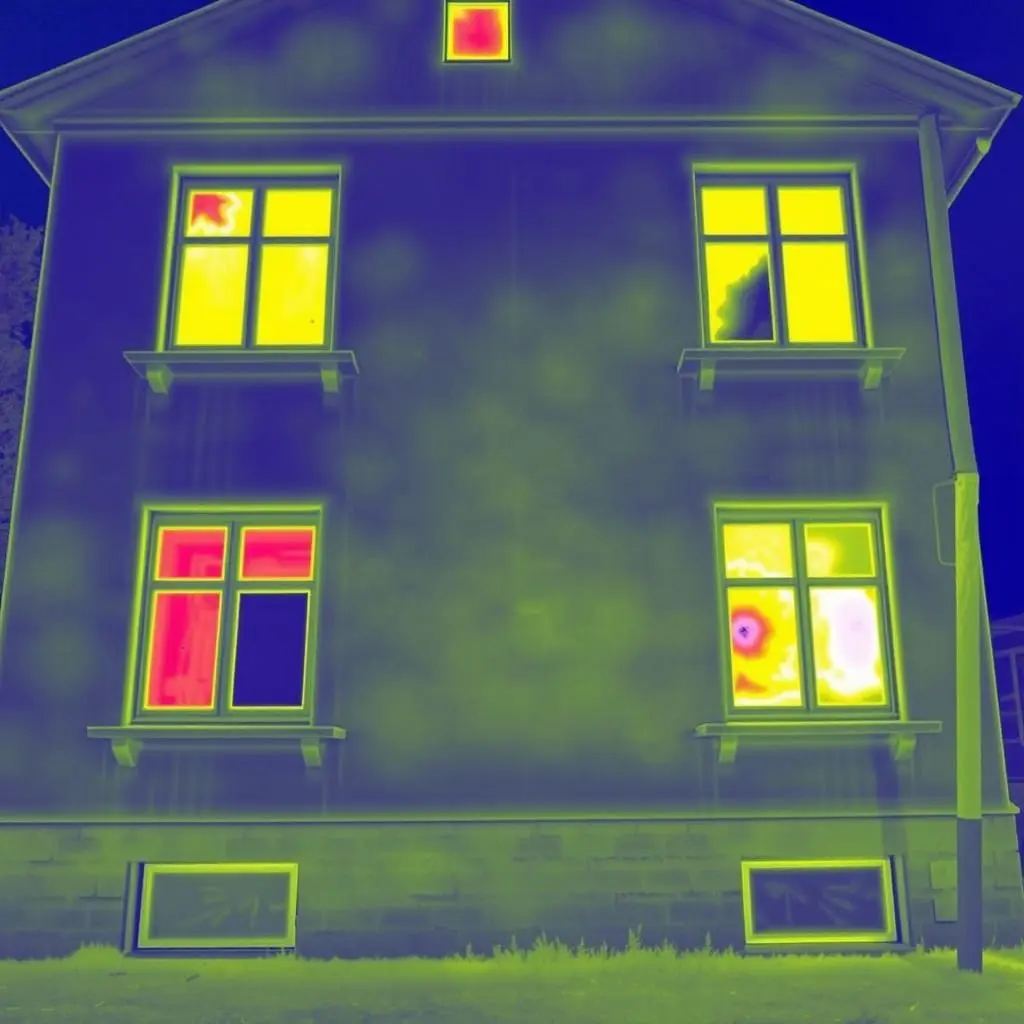
It’s a technology that literally adds another dimension to our sight, revealing hidden patterns of energy.
FAQs About Thermal Vision
Q: Can thermal cameras see through walls or clothing?
A: No, not in the way people often imagine. Thermal cameras detect radiation emitted from surfaces. They cannot see through opaque objects like walls or most fabrics. However, they can detect the heat radiating from the surface of the wall or clothing, which might indicate something happening on the other side (like a hot pipe behind a wall) or the temperature of the surface itself.
Q: Do thermal cameras work in complete darkness?
A: Absolutely! Since they detect emitted infrared radiation (heat) rather than visible light reflecting off objects, thermal cameras work just as well in total darkness as they do in daylight.
Q: How far can a thermal camera see?
A: Thermal cameras can theoretically detect temperature differences from very far away, but the ability to resolve details (see distinct objects or specific temperatures accurately) decreases with distance, just like with a regular camera. The range depends heavily on the camera’s resolution, lens, and atmospheric conditions.
Q: Are thermal cameras dangerous?
A: No, using a thermal camera is not dangerous. They are passive devices, meaning they only receive infrared radiation; they do not emit any radiation themselves.
Reflecting on Seeing Heat
So there you have it – the science behind how thermal cameras unlock a hidden world of heat energy. It’s a clever combination of physics, material science, and signal processing that translates invisible thermal radiation into a colorful, informative image. This ability to literally visualize temperature opens up countless possibilities, allowing us to diagnose problems, improve efficiency, and understand the thermal dynamics of our environment in ways previously unimaginable. It’s truly about sensing the unseen and measuring the warmth.
